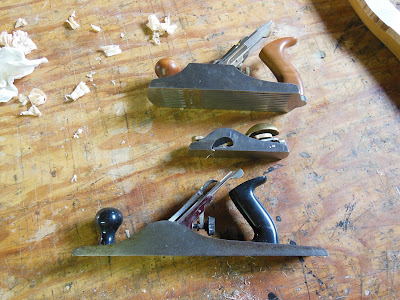The large screws that run down the center of the bar, are wood screws that pierce the termination piece and thread into the shelf. The center screws above the struts are machine screws that thread into the struts. The remaining screws along the edges of the bar, are machine threaded into the upper bar itself, and bear against the top of the termination piece. Why the two part construction? Perhaps the maker wanted to insulate the strings from, what they felt was the deleterious of a large mass of metal contacting the strings, while still having a large mass of metal contacting the strings.
Above a closeup of the termination piece, with the bar removed. The large open holes are where the the wood screws from above pierce the termination piece and enter the shelf. Also notice that the termination piece sits in a recess in the shelf.






Comments
Post a Comment